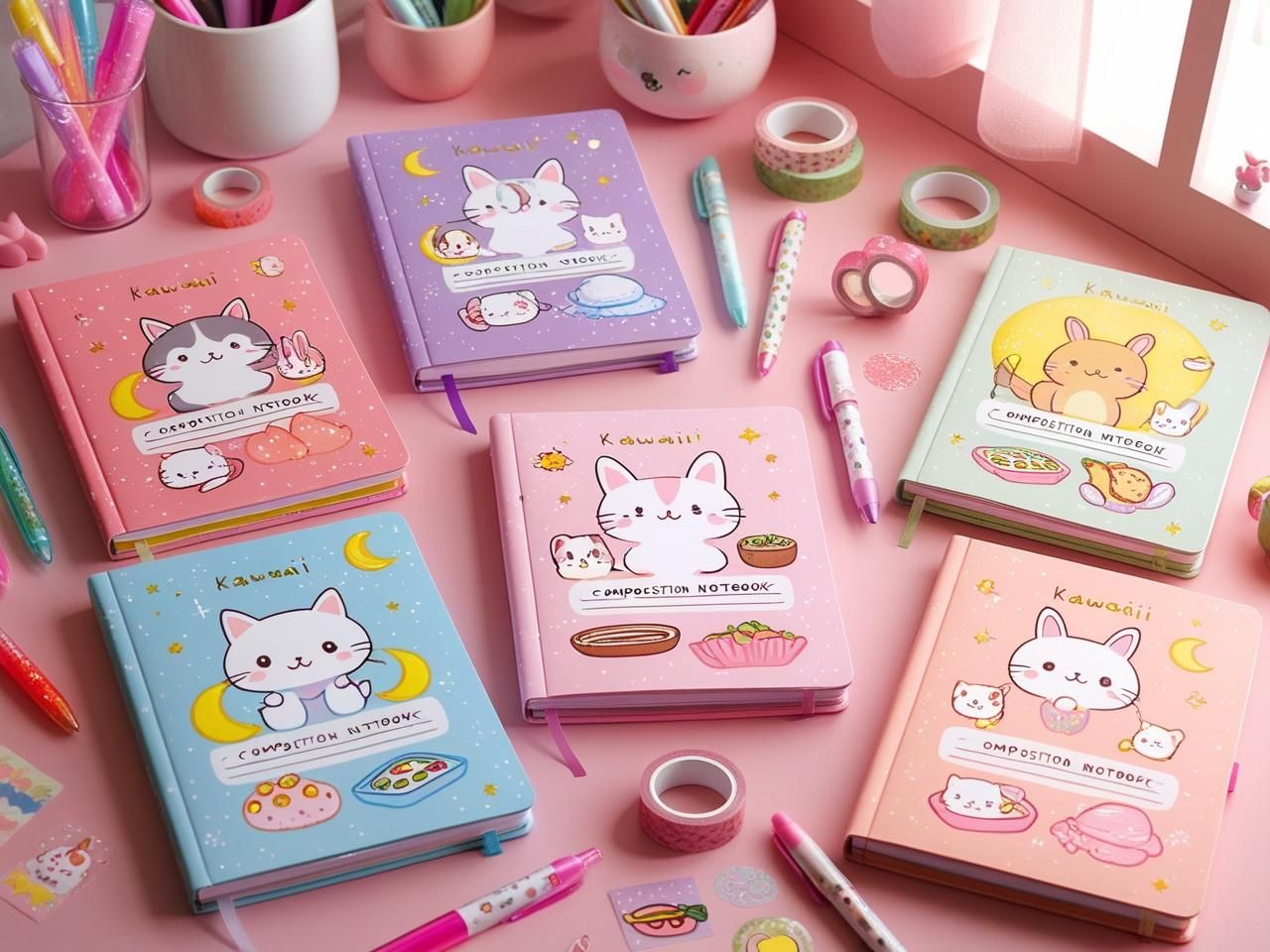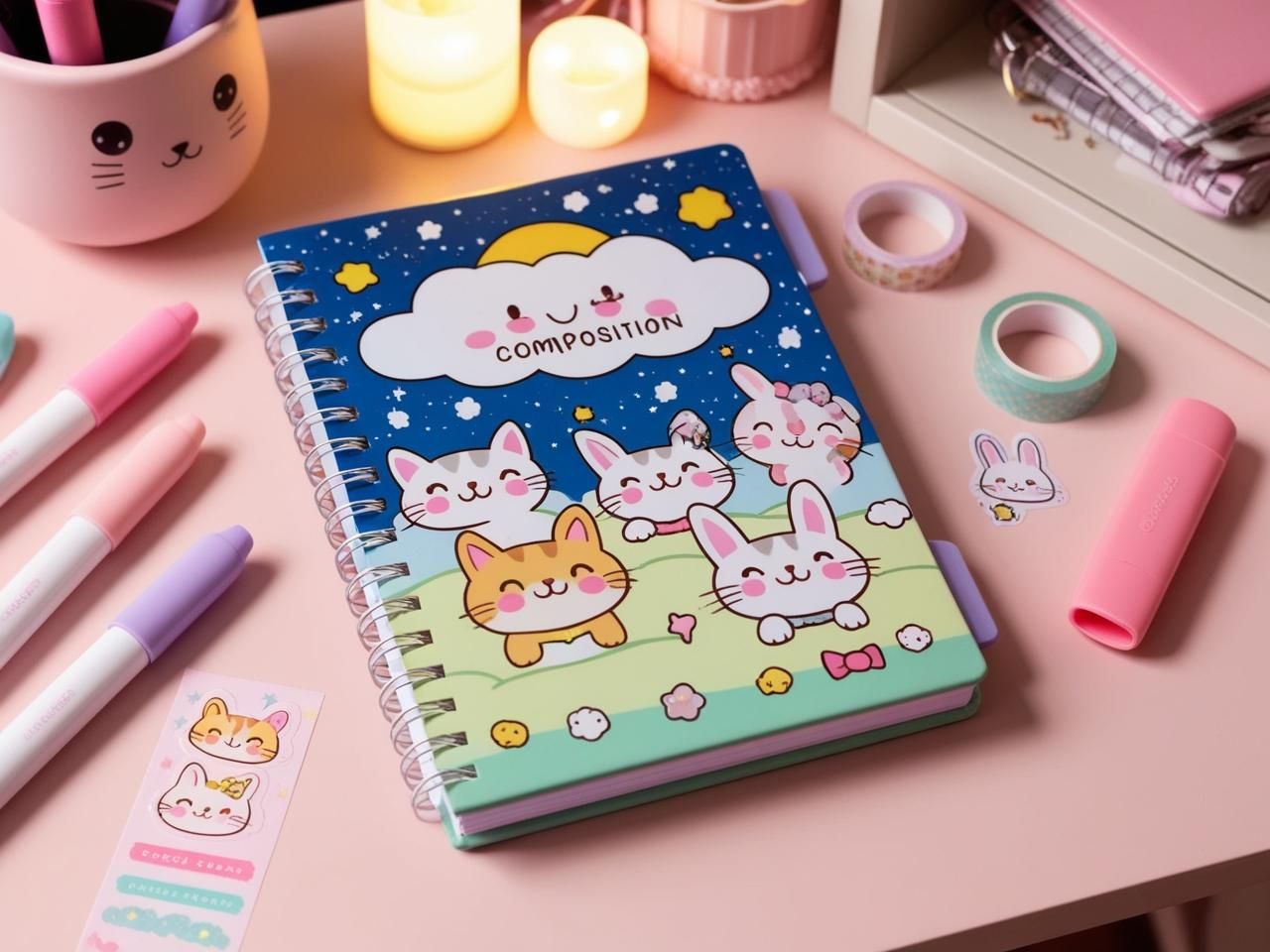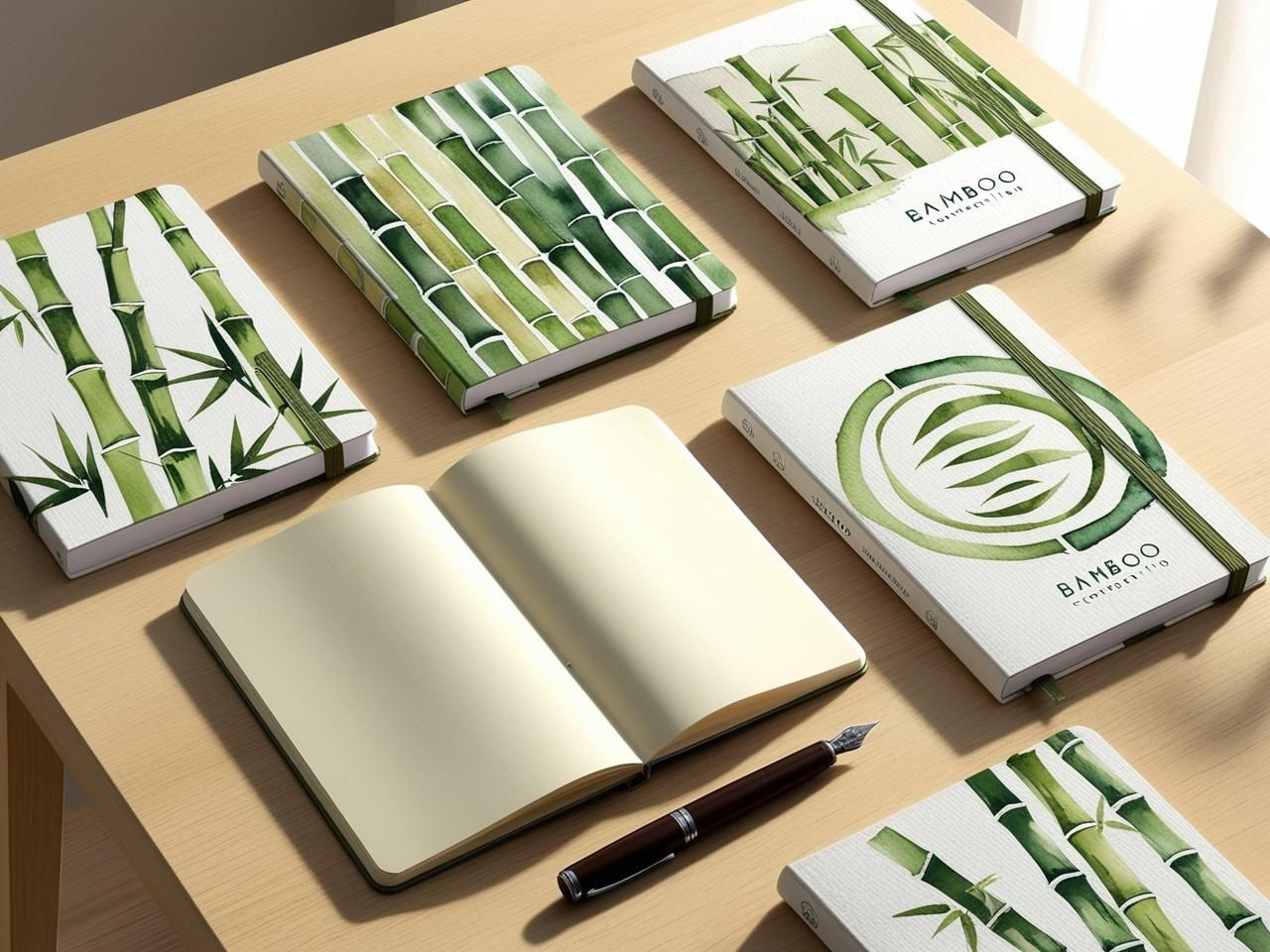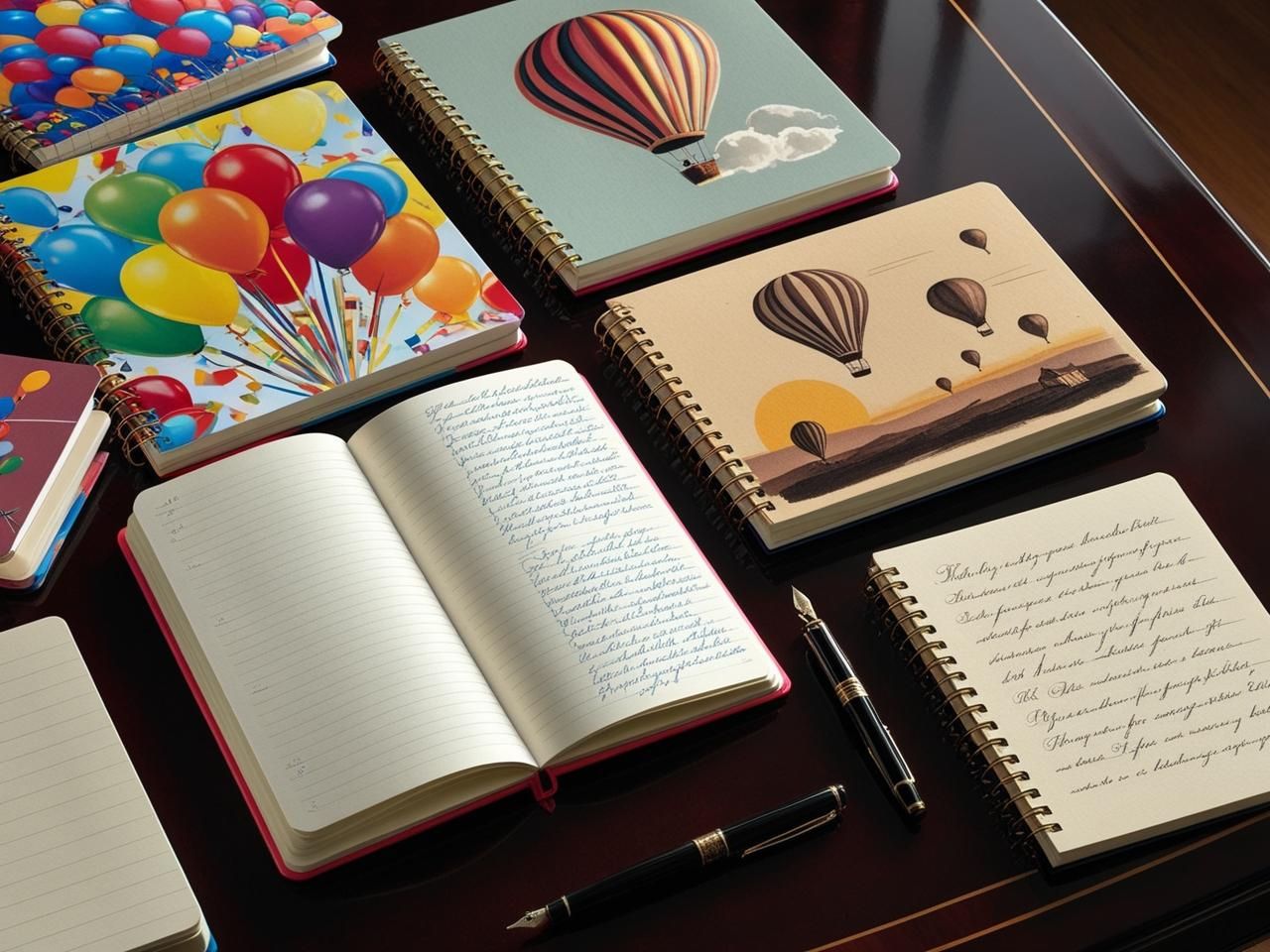- COMPOSITION NOTEBOOK
- Guides
- The Ultimate Guide to Primary Composition Notebooks: What They Are & How to Use Them
The Ultimate Guide to Primary Composition Notebooks: What They Are & How to Use Them
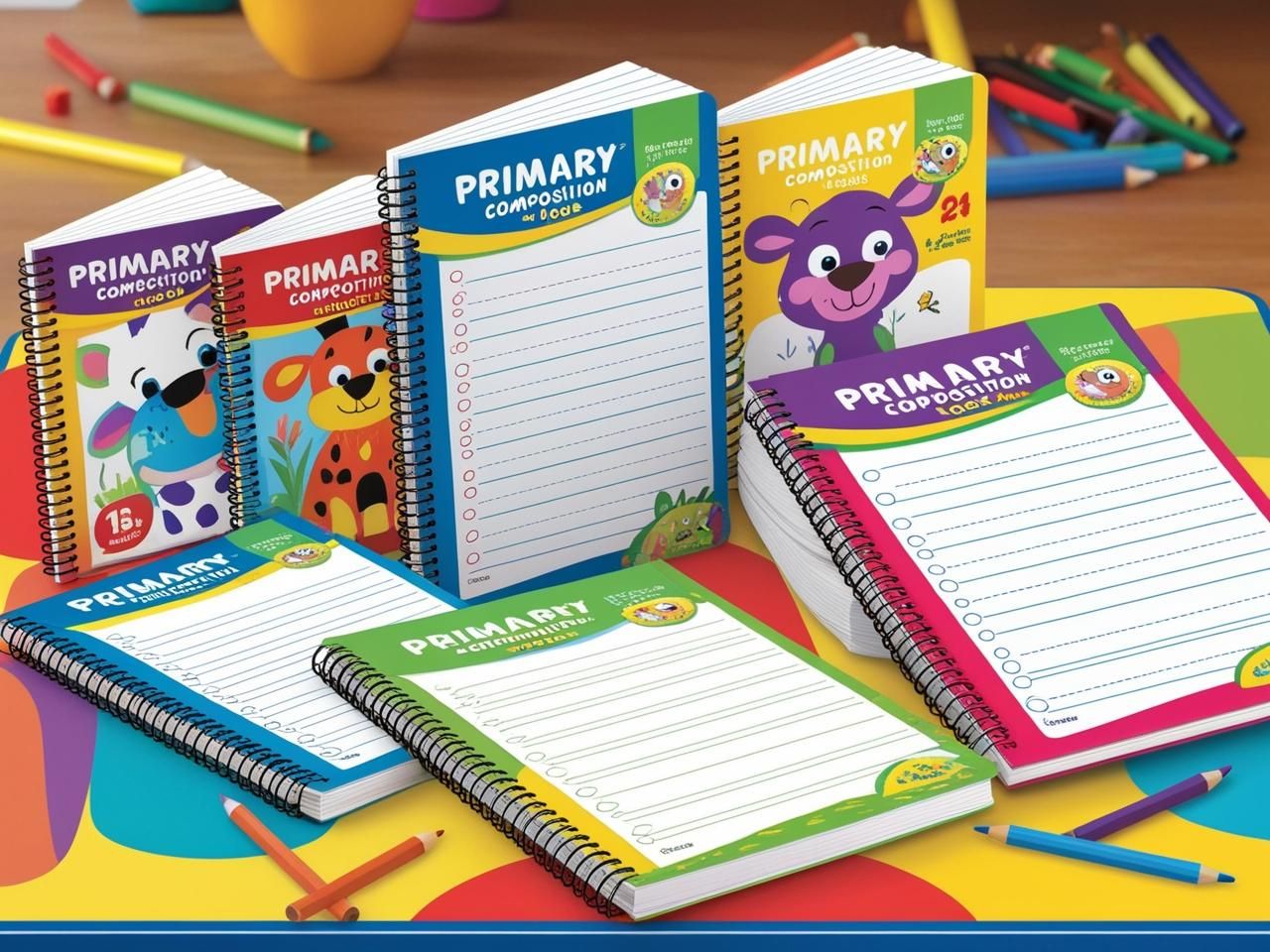
A primary composition notebook is an essential tool for young learners, designed specifically to support early handwriting development and creative writing. These notebooks feature wide-ruled lines with a dotted midline, making them ideal for children who are just starting to form letters and sentences. Many also include a blank space for drawing, encouraging creativity alongside structured writing practice.
Whether used in kindergarten, first grade, or second grade, these specialized notebooks help improve fine motor skills, literacy development, and writing confidence. They are a must-have in classrooms and homeschooling environments, ensuring that children can practice their handwriting in a structured and engaging way.
In this guide, we’ll cover everything you need to know about primary composition notebooks, including their features, benefits, and how teachers and parents can use them effectively. Looking for the best ones available? Explore the best primary composition notebooks on Amazon to find high-quality options for your child’s learning journey!.

What Is a Primary Composition Notebook?
A primary composition notebook is a specially designed notebook for early learners, particularly those in kindergarten through second grade. These notebooks are used to help young students develop handwriting skills by providing structured writing spaces with guidelines for letter formation.
Designed for Early Learners
Unlike standard notebooks, primary composition books cater to the unique needs of early education. They offer:
- Guided writing lines: Wide-ruled pages with a dotted midline to assist children in forming letters correctly.
- A drawing section: Many versions include a blank space at the top of the page to encourage creativity through illustrations.
- Ideal for ages 5-8: These notebooks are specifically designed for kindergarten, first-grade, and second-grade students to improve their literacy skills.
Unique Page Layout
One of the most distinctive features of a primary composition notebook is its structured page design. The pages typically include:
- Wide-ruled lines: Allowing for larger, more legible handwriting.
- Dotted midline: Helping children correctly size uppercase and lowercase letters.
- Blank drawing space: Encouraging self-expression and storytelling through images.
Durable and Kid-Friendly Design
These notebooks are built to withstand frequent use by young children. Their features include:
- Sturdy covers: Often made of thick cardstock or plastic to prevent damage.
- Stitched or spiral binding: Providing durability and ensuring that pages remain intact.
- Compact size: Typically measuring 9.75 x 7.5 inches, making it easy for small hands to manage.
Differences Between Primary Composition Notebooks and Wide Ruled Notebooks
Many parents and teachers wonder whether a primary composition notebook is necessary or if a standard wide-ruled notebook will suffice. The key differences lie in the design, spacing, and purpose of each type.
| Feature | Primary Composition Notebook | Wide Ruled Notebook |
|---|---|---|
| Line Spacing | Wide ruled with dotted midline | Standard wide ruled |
| Drawing Section | Yes (for illustrations) | No |
| Intended Age Group | Kindergarten to Grade 2 | Grade 3 and up |
| Purpose | Handwriting development | General note-taking |
The Evolution of Primary Composition Notebooks
Did you know that primary composition notebooks have been a staple in early education for over a century? While today’s versions are designed for handwriting development, their origins date back to the early 1900s when schools emphasized structured penmanship training.
- Early 20th Century: Primary composition books featured guidelines for cursive writing, helping students perfect letter formation.
- Mid-1900s: Schools began using wide-ruled books with dotted midlines to help children transition from print to cursive.
- Modern-Day Variations: Today, primary composition notebooks incorporate drawing sections to encourage creativity alongside writing.
As education methods evolved, so did the design of these notebooks, making them an indispensable tool for young learners developing their literacy skills!

Benefits for Learning and Handwriting Development
A primary composition notebook is more than just a simple notebook—it’s a structured learning tool that enhances early literacy and handwriting skills. By combining writing practice with visual creativity, these notebooks play a vital role in childhood education.
Helps Develop Fine Motor Skills
- Guided lines improve letter formation: The wide-ruled lines and dotted midline help children size and space their letters correctly.
- Encourages proper pencil grip: Writing on structured pages allows kids to control hand movements while forming letters.
- Enhances dexterity: Repetitive practice strengthens fine motor coordination, an essential skill for writing fluency.
Supports Early Literacy and Cognitive Growth
- Combining writing with drawing: The illustration space encourages young learners to express their thoughts visually before forming sentences.
- Boosts comprehension skills: Writing and illustrating together reinforces storytelling abilities and critical thinking.
- Encourages sentence formation: Using structured lines helps students transition from single words to full sentences naturally.
Builds Writing Confidence in Young Learners
- Reduces frustration: The clear guidelines provide structure, making the writing process less intimidating for beginners.
- Supports progress tracking: Students and teachers can see improvements over time by comparing past and current entries.
- Prepares students for more advanced writing: Using primary composition notebooks in early grades builds a foundation for future writing success.
Top Brands and Models Available
Best Overall
For parents and teachers looking for a high-quality primary composition notebook, this option stands out. It features:
- Durable cover and strong binding: Built to withstand daily use in classrooms.
- Premium-quality paper: Thick pages to prevent ink bleed-through.
- Wide-ruled lines with a drawing section: Ideal for structured handwriting practice.
Perfect for helping young learners develop writing skills with ease. Explore the best primary composition notebooks on Amazon.
Best Budget-Friendly Option
Affordable yet reliable, this notebook offers structured writing practice at an excellent price. Features include:
- Lightweight but durable design: Great for classrooms and bulk purchases.
- Well-spaced lines: Supports beginners learning to write letters and numbers.
- Blank top section: Encourages creativity through drawing.
Best for Homeschooling
Designed for home-based learning, this primary composition notebook includes:
- Pre-designed prompts: Helps parents guide structured writing lessons.
- Spiral-bound or stitched options: Choose the best format for long-term use.
- Brightly lined pages: Easy for young children to follow.
Best for Drawing & Writing
For kids who enjoy illustrating their thoughts alongside writing, this notebook features:
- Extra-large drawing space: Allows for more creative storytelling.
- Guided writing sections: Perfect for transitioning from pictures to text.
- Thick pages: Prevents smudging and bleed-through from markers or pens.
Looking for an ideal notebook for your child? Find high-quality handwriting practice notebooks for kids on Amazon.





Why Do Primary Composition Notebooks Include a Drawing Section?
One of the unique features of a primary composition notebook is the blank space at the top of each page. This section serves an essential role in early childhood learning, helping children develop both writing and cognitive skills.
- Encourages Creativity: Young learners express ideas visually before forming sentences.
- Supports Storytelling: Kids can draw scenes and then write about them, reinforcing comprehension.
- Boosts Writing Confidence: Combining art with text makes writing feel less intimidating.
- Enhances Memory Retention: Studies show that drawing alongside writing improves recall and language development.
This integrated approach helps children think critically and communicate more effectively, making primary composition notebooks a fundamental tool for early literacy!
How Teachers and Parents Can Effectively Use Primary Composition Notebooks
A primary composition notebook is a versatile tool that can be used both in the classroom and at home. By incorporating structured exercises and interactive activities, teachers and parents can help children develop strong handwriting skills while fostering creativity and literacy growth.
Classroom Activities & Lesson Integration
- Daily handwriting practice: Assign structured exercises where students write letters, words, or short sentences.
- Sentence-building exercises: Provide sentence starters to encourage early writing fluency.
- Illustration-based storytelling: Have students draw a scene in the blank section and write a short story underneath.
- Interactive learning: Use guided prompts to reinforce spelling, phonics, and basic grammar.
Homeschooling & Parent-Guided Learning
- Journaling & self-expression: Encourage children to write about their daily experiences, thoughts, or dreams.
- Letter formation practice: Parents can create handwriting drills based on specific letters or words.
- Word tracing: Use the notebook to help kids trace words and gradually transition to independent writing.
- Early literacy development: Pair writing with phonics lessons to strengthen reading and spelling skills.
Examples of Practical Activities Using Primary Composition Notebooks
1. Story Writing & Illustration
Children can create their own short stories by illustrating scenes and writing descriptions underneath. This activity helps develop creativity, vocabulary, and sentence structure.
2. Interactive Journaling
Encouraging kids to reflect on their day through words and drawings promotes self-expression and strengthens emotional awareness.
3. Letter & Word Tracing
Using primary composition notebooks for letter tracing exercises is an excellent way to reinforce correct handwriting techniques.
4. Sentence Building Games
Parents and teachers can create fun grammar exercises by having kids rearrange words into proper sentences or fill in missing words in a sentence.
5. Themed Writing Challenges
Using seasonal or topic-based prompts, such as “What is your favorite holiday memory?” can inspire kids to write with enthusiasm.
Maintaining Engagement and Progress with Primary Composition Notebooks
Consistency is key when using a primary composition notebook for early learning. By incorporating fun and engaging activities, children are more likely to develop a positive attitude toward writing and literacy.
Setting Writing Goals
- Daily Writing Routine: Encourage children to write one or two sentences each day to build consistency.
- Progress Tracking: Date each page and review past entries to see improvement over time.
- Sticker Rewards: Use a simple sticker-based reward system to celebrate achievements.
Incorporating Interactive Elements
- Color Coding: Use different colors for vowels, consonants, or sentence parts to reinforce learning.
- Cut & Paste Activities: Encourage kids to glue in small printed words and build sentences.
- Drawing Prompts: Provide a fun theme for kids to illustrate before writing.
Encouraging Independent Writing
As children gain confidence, introduce more independent writing exercises. Instead of tracing or copying letters, challenge them to write full words and short paragraphs on their own.
Using Primary Composition Notebooks for Different Subjects
Beyond handwriting practice, these notebooks can be adapted for various subjects:
- Science: Use the drawing space for labeling plants, animals, or weather patterns.
- Math: Create word problems and number writing exercises.
- Social Studies: Encourage children to describe their neighborhood or family traditions.
Why Primary Composition Notebooks Are Essential for Early Learning
By providing a structured yet flexible format, primary composition notebooks help young learners build foundational skills that will benefit them throughout their academic journey.
Looking for a high-quality notebook for your child? Explore the best primary composition notebooks on Amazon and give your little one the perfect tool to develop their writing and creativity!
Helpful Tips for Using Primary Composition Notebooks
What is a primary composition notebook used for?
A primary composition notebook is designed for early learners to practice handwriting, letter formation, and creative storytelling. It includes wide-ruled lines with a dotted midline for guided writing and a blank space for drawing to encourage creativity.
How does a primary composition notebook help with handwriting?
The structured pages with wide-ruled lines and a dotted midline help children size and space their letters correctly. This improves fine motor skills, coordination, and writing confidence.
What age group should use a primary composition notebook?
Primary composition notebooks are best suited for children in kindergarten through second grade (ages 5-8), as they provide the necessary structure for early handwriting development.
Can a primary composition notebook be used for homeschooling?
Yes! Many homeschooling parents use primary composition notebooks to teach handwriting, storytelling, and literacy. They are a great tool for structured learning at home.
What is the difference between a primary composition notebook and a wide-ruled notebook?
A primary composition notebook includes wide-ruled lines with a dotted midline and a blank space for drawings, while a wide-ruled notebook is intended for older students with standard lined pages for general note-taking.
How can parents encourage kids to use a primary composition notebook?
Parents can encourage use by setting up fun activities like drawing and writing prompts, journaling, or daily practice sessions. Offering stickers or small rewards can also motivate young learners.
Are there different types of primary composition notebooks?
Yes, some primary composition notebooks come with additional features like pre-designed writing prompts, extra-large drawing sections, or durable covers designed for classroom use.
Where can I buy the best primary composition notebooks?
You can find high-quality primary composition notebooks online. Check out this selection:
Explore the best primary composition notebooks on Amazon.
RELATED POST
Composition Notebook by Pieffeweb | Cookie Policy | Privacy Policy | Disclaimer











